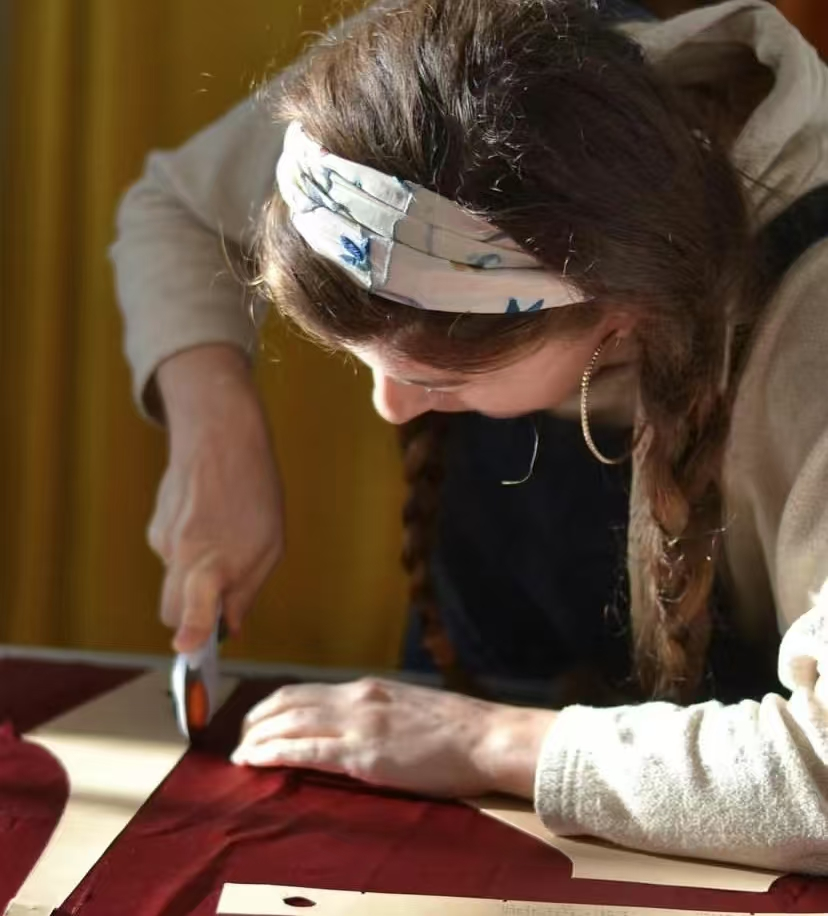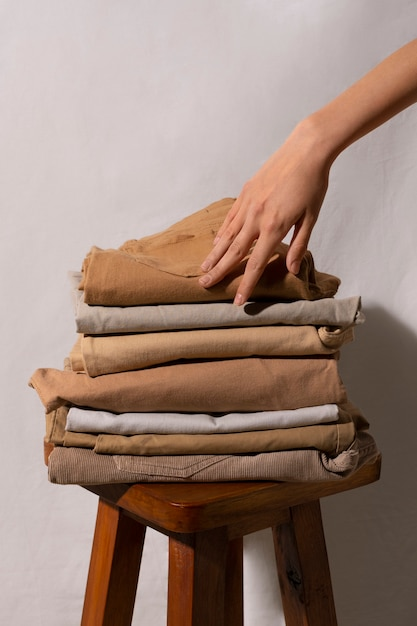Garment

Playing board In the garment making process, pattern making is a key link. First of all, the designer draws a sketch of the flat structure of the garment on the paper according to the style and size of the garment, using professional tools, such as rulers, curve boards, soft rulers, etc. Subsequently, the data of each part of the human body is accurately measured, and the sketch is finely adjusted according to these data, and the specific size and shape of each part are clarified, and the design concept is translated into the actual operation of the version. The importance of pattern making is self-evident, it is a bridge between the design concept and the actual production, the accurate version is to ensure the fit and comfort of the garment, show the design effect of the basis, directly affect the final quality of the garment and wearing experience.
Crop the plates
 Ready-to-wear tailoring is a crucial step in transforming a design into a physical object. Before cutting, it is necessary to carefully check the version and make reasonable layout according to the characteristics of the fabric to reduce waste. Prepare scissors, cutters, and other tools to cut the fabric that lays flat. When cutting, strictly follow the silhouette of the version, and cut the knife accurately to ensure that the lines are smooth and the size is correct, especially pay attention to the neckline, cuffs and other details. The importance of tailoring should not be underestimated, it directly determines the shape and dimensional accuracy of the garment, precise tailoring can make the garment fit the human body, ensure wearing comfort, and at the same time maximize the original intention of the design, is the basis for making high-quality garments.
Ready-to-wear tailoring is a crucial step in transforming a design into a physical object. Before cutting, it is necessary to carefully check the version and make reasonable layout according to the characteristics of the fabric to reduce waste. Prepare scissors, cutters, and other tools to cut the fabric that lays flat. When cutting, strictly follow the silhouette of the version, and cut the knife accurately to ensure that the lines are smooth and the size is correct, especially pay attention to the neckline, cuffs and other details. The importance of tailoring should not be underestimated, it directly determines the shape and dimensional accuracy of the garment, precise tailoring can make the garment fit the human body, ensure wearing comfort, and at the same time maximize the original intention of the design, is the basis for making high-quality garments.
Sewing plates 
Garment sewing is a key part of transforming a cut fabric into a complete garment. First of all, according to the design requirements, choose the right thread, needle and sewing machine. Starting from the basic parts, such as sewing the sleeves and trouser legs, to the front and back pieces, each step needs to be strictly aligned with the edges, and stitches such as flatstitching, overlocking, and interlocking are used to ensure that the stitches are even and fine. During the sewing process, details such as necklines, cuffs, and pockets are particularly important and require precise manipulation to achieve a delicate effect. Sewing directly determines the firmness and aesthetics of the garment, and the exquisite sewing technology can make the garment fit crisp and comfortable to wear, which is the core of creating high-quality garments and giving the garment real vitality.



 电话:0558-4148866
电话:0558-4148866
 邮箱:ir@yyfiber.com.cn
邮箱:ir@yyfiber.com.cn
 地址:安徽省阜阳市颍上县慎城镇经济开发区管鲍路北侧分金路东侧
地址:安徽省阜阳市颍上县慎城镇经济开发区管鲍路北侧分金路东侧